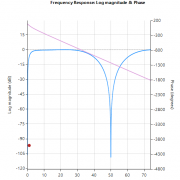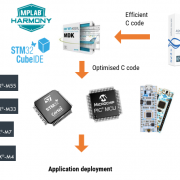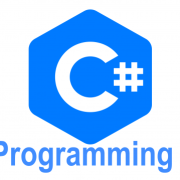In the rapidly evolving landscape of digital transformation, organizations are increasingly leveraging Real-Time Edge Intelligence (RTEI) solutions to enhance operational efficiency and decision-making capabilities. RTEI refers to the deployment of advanced data processing and analytics at the edge of the network (i.e. closer to where data is generated) rather than relying solely on centralized cloud infrastructure. This approach successfully addresses the challenges posed by traditional data processing methods and offers significant benefits across multiple sectors, particularly when building solutions with Arm processor technology.
Key concepts of Real-Time Edge Intelligence
- Improved Response Times: RTEI enables immediate data processing and analysis, resulting in faster decision-making. For industries like healthcare, manufacturing, and transportation, this can mean the difference between success and failure in critical situations. Arm processors allow for high-performance computing in compact form factors, making them ideal for real-time applications.
- DSP/ML at the Edge: Arm’s extensive ecosystem of partner solutions and in-built algorithmic accelerator technology makes deploying DSP algorithms and ML models on the edge very easy. This enables RTEI solutions to provide real-time insights and predictions of the process that they’re monitoring, empowering organizations to automate processes and respond dynamically to changing conditions.
- Data cleaning and feature extraction: Arm-based devices can clean noisy sensor data and extract features interest at the edge, sending only relevant data to the cloud. This minimizes bandwidth usage and optimizes network performance, ensuring that only critical data is transmitted. Arm’s low-power architecture is ideal for this task, allowing devices to perform complex computations in battery-powered applications.
- Cost Efficiency: By reducing the amount of data sent to the cloud, organizations can lower bandwidth costs and cloud storage expenses. The efficient processing capabilities of Arm processors allow for more effective resource use, leading to operational cost savings. Their energy efficiency further contributes to reduced operational costs in large-scale deployments.
- Increased Reliability: RTEI solutions can operate independently of cloud connectivity, ensuring that essential mission-critical applications continue to function even during a network outage. The robustness of Arm technology in various environmental conditions enhances system reliability and operational resilience, particularly in remote locations, typically encountered in many IoT applications.
- Scalability: Arm-based solutions can be easily scaled to accommodate growing data volumes and an increasing number of connected devices. The modularity of Arm architecture supports the development of a diverse ecosystem of devices, making it easier for organizations to adapt to changing business needs.
Enhanced security and privacy with Arm TrustZone
Security is a critical concern for edge devices, particularly those handling sensitive data. Arm TrustZone (Cortex-M33, Cortex-M52 and Cortex-A) implements a security paradigm that discriminates between the running and access of untrusted applications running in a Rich Execution Environment (REE) and trusted applications (TAs) running in a secure Trusted Execution Environment (TEE). The basic idea behind a TEE is that all TAs and associated data are secure as they are completely isolated from the REE and its applications. As such, this security model provides a high level of security against hacking, stealing of encryption keys, and counterfeiting, and as such provides an elegant way of protecting sensitive client information.
DSP support for Algorithms
DSP is critical for many RTEI applications, including audio and video processing, sensor signal processing and data analysis. Arm’s broad range of processors offer extensive DSP capabilities, allowing for the implementation of complex algorithms in floating-point. The Cortex-M family dominates the low-power micro-controller market as described below, whereas the more powerful Application or Cortex-A processors target mini-computers, such as the Raspberry Pi and smartphones etc. The Cortex-R family targets real-time safety-critical applications, such as automotive and radar.
All three types of processors offer algorithmic support, but the Cortex-M family is particularly interesting, as it adds DSP functionality to low-power microcontroller devices making it highly desirable for the IoT market, as we now discuss in the following section.
Cortex-M processors
Although a few processor technologies exist for microcontrollers (e.g. RISC-V, Xtensa, MIPS), over 90% of the microcontrollers used in the smart product market are powered by so-called Arm Cortex-M processors that offer a combination of high algorithmic performance, low-power and security. The Arm Cortex-M4 is a very popular choice with several silicon vendors (including ST, TI, NXP, ADI, Nordic, Microchip, Renesas), as it offers DSP (digital signal processing) functionality traditionally found in more expensive devices and is low-power.
Acceleration of DSP calculations
The Armv7E-M architecture supports a DSP extension that implements an SIMD (single instruction, multiple data) architecture extension that can significantly improve the performance of an algorithm. The basic idea behind SIMD involves parallel execution of an instruction (e.g. Add, Subtract, Multiply, Divide, Abs etc) on multiple data elements via the use of 64 or 128-bit registers. These DSP extension intrinsics (SIMD optimised instruction) support a variety of data types, such as integers, floating and fixed-point.
The high efficiency of the Arm compiler allows for the automatic dissemination of your C code in order to break it up into SIMD intrinsics, so explicit definition of any DSP extension intrinsics in your code is usually unnecessary. The net result for your application is much faster code, leading to better power consumption and for wearables, better battery life.
What algorithmic operations would use this?
The following examples give an idea of operations that can be significantly speeded up with SIMD intrinsics:
- vadd can be used to expedite the calculation of a dataset’s mean. Typical applications include average temperature/humidity readings over a week, or even removing the DC offset from a dataset.
- vsub can be used to expedite numerical differentiation in peak finding for a sinewave tracking application.
- vabs can be used for expediting the calculation of an envelope of a fullwave rectified signal in EMG biomedical and smartgrid applications.
- vmul can be used for windowing a frame of data prior to FFT analysis. This is also useful in audio applications using the overlap-and-add method.
The hardware floating point unit is very good for expediting MAC (multiply and accumulate) operations used in digital filtering, requiring just three cycles to complete. Other DSP operations such as add, subtract, multiply and divide require just one cycle to complete.
Key takeaways
As organizations continue to embrace digital transformation, Real-Time Edge Intelligence (RTEI) solutions, particularly when integrated with Arm processor technology, stand out as key enablers of innovation and efficiency. By harnessing the power of edge computing and the performance advantages of Arm’s Cortex-A and Cortex-M architectures, the security benefits of Arm TrustZone, and the DSP capabilities for advanced algorithms, businesses can achieve rapid decision-making, enhance security, and optimize operational costs. The future of data processing lies at the edge, and those who adopt RTEI solutions powered by Arm technology will be well-positioned to thrive in an increasingly competitive landscape.










Leave a Reply
Want to join the discussion?Feel free to contribute!